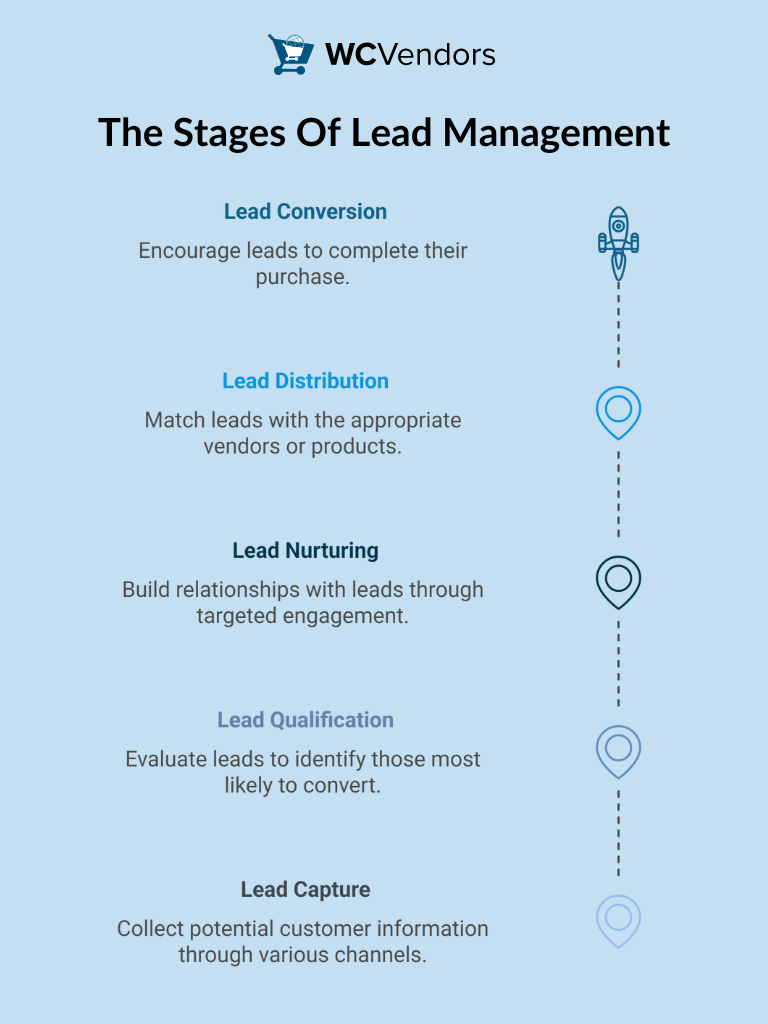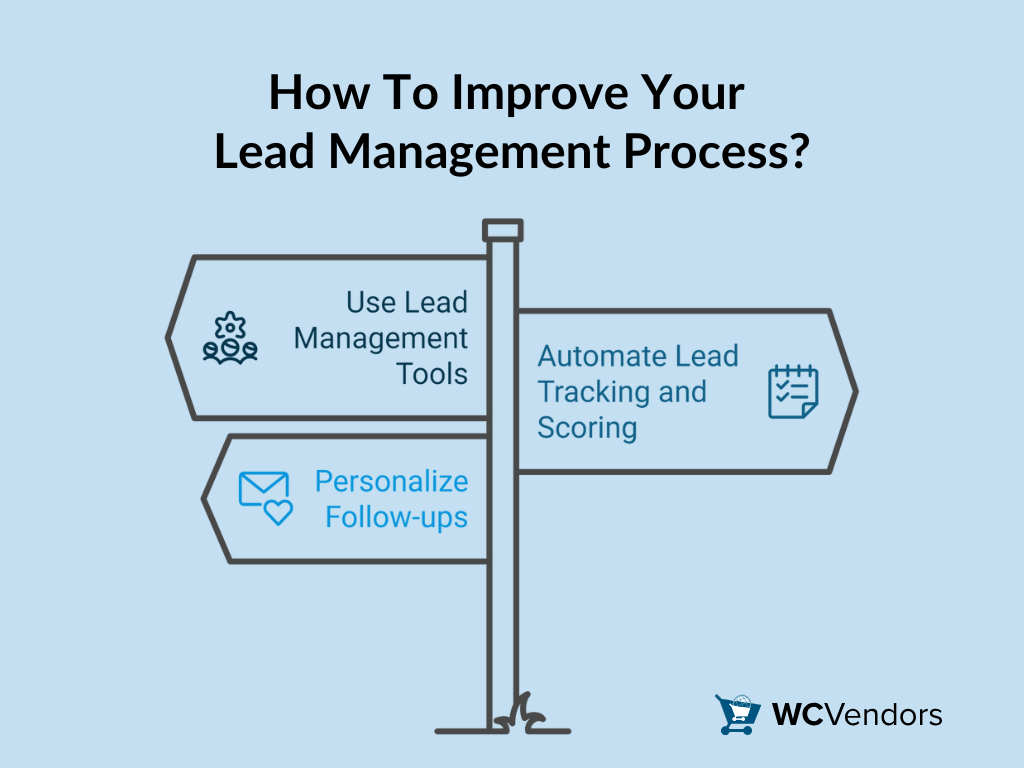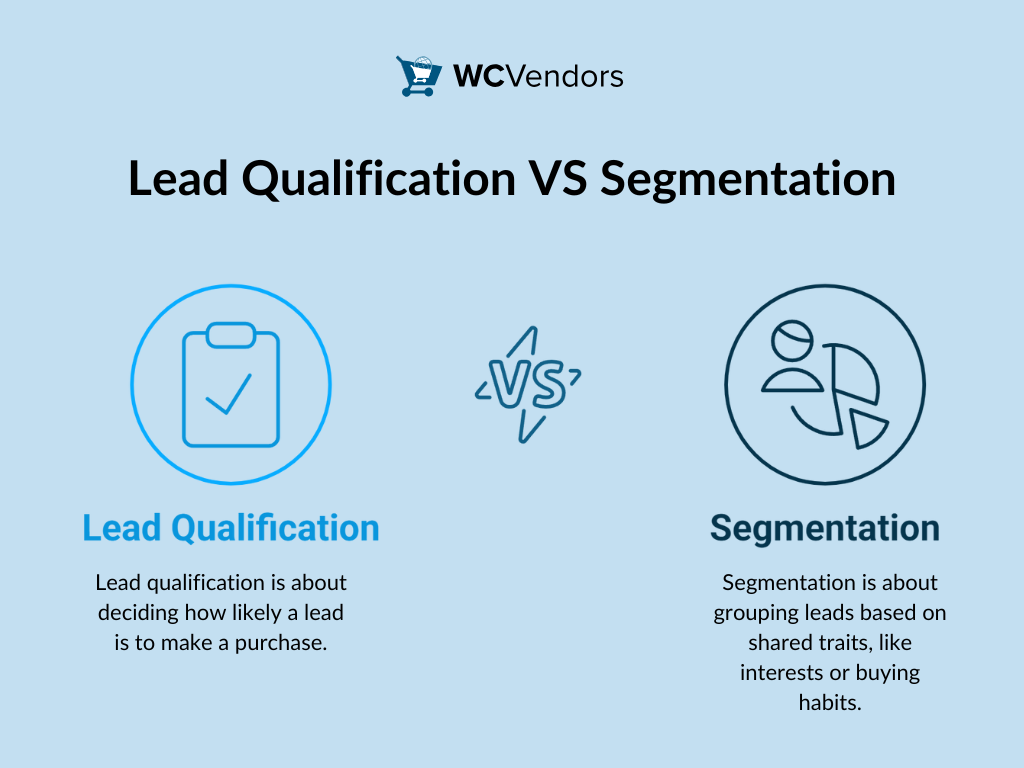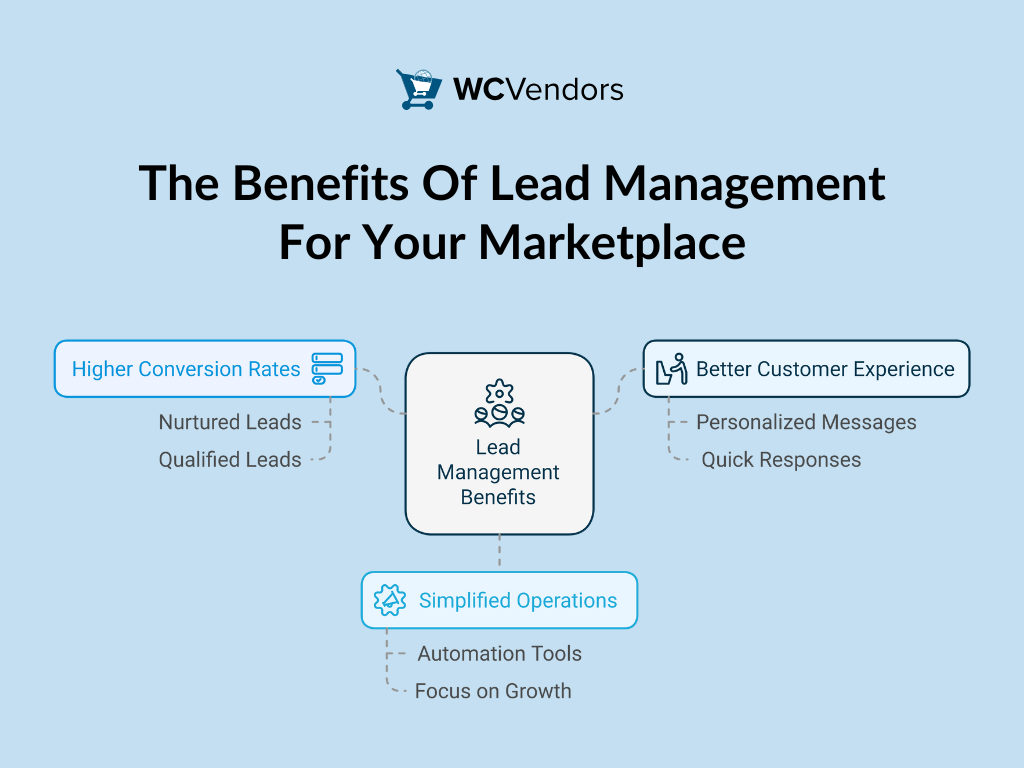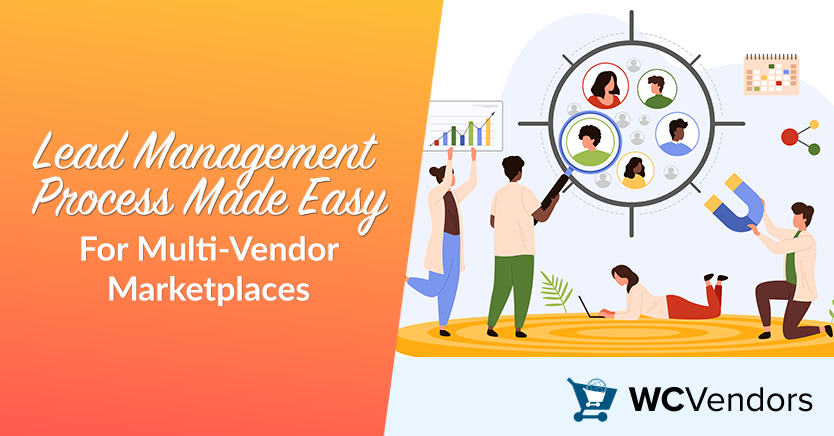
Running a multi-vendor marketplace is exciting, but managing leads can be a major challenge. Leads are the lifeblood of your business, but without a clear system, they can slip through the cracks. This is where the lead management process becomes so important.
This process helps you capture, track, and convert leads into loyal buyers while keeping everything organized. Many marketplace owners find it confusing or overwhelming, but it doesn’t have to be! With the right tools and strategies, you can turn it into a simple, effective system.
In this article, you’ll learn how to simplify the lead management process for your multi-vendor marketplace. We’ll share practical tips, explore helpful tools, and explain how better lead management can boost your marketplace’s success.
Let’s get started!
What Is Lead Management, And Why Is It Important?

At its core, lead management is the process of capturing, tracking, qualifying, and nurturing leads. It guides potential customers from showing interest to making a purchase. For a multi-vendor marketplace, having a good lead management system is essential. It connects potential buyers with the right vendors and products. This improves customer satisfaction and increases the chances of making a sale.
The role of lead management in your marketplace cannot be overlooked. Without it, leads can be lost, and vendors miss out on valuable sales opportunities. This can lead to frustration for both vendors and customers.
By implementing an effective lead management process, you can solve these problems. It helps your marketplace run more smoothly and gives your vendors the tools they need to succeed. With the right approach, lead management becomes a powerful way to grow your marketplace and keep everyone happy.
The Stages Of Lead Management In Multi-Vendor Marketplaces
Breaking the lead management process into stages makes it easier to create a smooth experience for both vendors and customers. Each stage plays a critical role in moving leads closer to making a purchase.
Here’s how it works:
- Lead Capture: Start by collecting potential customer information. This can be done through forms, email sign-ups, or inquiries. Simple tools like customized product offerings can make your marketplace more appealing. They encourage leads to share their details and take the first step toward buying.
- Lead Qualification and Segmentation: Not all leads are the same. Some are more likely to buy than others. Use a lead scoring system to evaluate how interested each lead is. Consider factors like purchase intent, engagement history, or even interest in seasonal demand products. For more insight, you can learn about seasonal demand here.
- Lead Nurturing: Once you’ve captured and qualified leads, focus on building a relationship with them. Share helpful content, special offers, or updates. This keeps your marketplace top of mind. Nurturing leads is especially important in competitive marketplaces, where potential buyers have plenty of options.
- Lead Distribution: Next, match leads with the vendors or product categories that fit their needs. Efficient lead routing ensures that every lead gets proper attention. It also improves the customer experience by connecting buyers with the right solutions quickly.
- Lead Conversion: Finally, guide leads to complete their purchase. Use proven techniques, like WooCommerce flash sales, to create urgency and motivate action. Flash sales can be an excellent way to turn hesitant leads into paying customers. You can learn more about creating WooCommerce flash sales here.
By following these stages, you can turn potential buyers into loyal customers. It’s a win-win for everyone in your marketplace.
How To Improve Your Lead Management Process
Improving your lead management process doesn’t have to be complicated. Focus on these three key strategies to make a big impact:
1. Use lead management tools
Consider using tools like HubSpot, Zoho CRM, or Salesforce to simplify lead management. These tools can automate tasks like tracking leads, scoring them, and managing customer information.
With these systems, vendors can easily monitor buyer activity. For example, they can see which products customers browsed or added to their carts. This makes it easier to follow up with the right message at the right time.
By automating these processes, vendors save time and focus on closing sales. It’s a smart way to stay organized and improve results across your marketplace.
2. Automate lead tracking and scoring
Automation helps save time and makes sure every lead gets proper attention. A lead tracking system lets you see where buyers are in their journey. It shows if they’re just browsing or getting closer to making a purchase.
At the same time, a lead scoring system ranks leads based on how interested they are. This helps vendors focus on the most promising buyers. For example, if a vendor offers WooCommerce accommodation bookings, they can follow up with leads who viewed listings but didn’t book.
By using these tools, vendors can connect with the right leads at the right time. This boosts their chances of turning interest into sales.
3. Personalize follow-ups
Vendors should customize their communication for each lead. Tailored messages make buyers feel valued and increase the chances of a sale.
Personalized emails, special offers, or reminders work well to encourage action. For example, if a lead showed interest in customized product options, the vendor could offer a discount on similar items.
This personal touch makes leads more likely to engage and move forward with their purchase. It’s an effective way to turn interest into conversions.
Using these three strategies will simplify your lead management process. It will help vendors turn leads into customers while boosting your marketplace’s growth.
But how do you know which leads to focus on? That’s where lead qualification and segmentation come in. Let’s explore how they can make a big difference!
Lead Qualification And Segmentation: Why It Matters
Lead qualification and segmentation may sound similar, but they have different roles. Lead qualification is about deciding how likely a lead is to make a purchase. Segmentation, on the other hand, is about grouping leads based on shared traits, like interests or buying habits. Together, they help vendors focus on the right leads with the right message.
Imagine a customer browsing rental products on your marketplace. They spend time looking at a few listings but leave without making a decision. Using segmentation, this customer can be grouped with others interested in rentals. Lead qualification then helps determine how serious they are about booking. With this information, vendors can send tailored offers, like a discount or helpful tips about renting.
By combining these two strategies, vendors can prioritize their efforts. They spend less time on cold leads and focus more on those ready to take action. This makes their approach more efficient and helps improve conversion rates.
The Benefits Of Lead Management Process For Your Marketplace
A strong lead management process can bring big advantages to your multi-vendor marketplace. It helps both vendors and customers while boosting your marketplace’s overall success.
Here’s how:
- Higher Conversion Rates: When leads are nurtured and qualified properly, vendors can turn more prospects into paying customers. This means fewer missed opportunities and more sales.
- Better Customer Experience: Personalized messages and quick responses make customers feel valued. When leads get the attention they need, they are more likely to return and make repeat purchases. Learn more about fostering repeat business here.
- Simplified Operations: Automation tools take over time-consuming tasks like tracking and follow-ups. This gives vendors more time to focus on growing their businesses and connecting with customers.When your marketplace uses lead management effectively, everything runs smoother. Customers are happy, vendors succeed, and your platform grows stronger.
Conclusion
Creating a lead management strategy doesn’t have to be overwhelming. With the right steps and tools, you can turn your multi-vendor marketplace into a system that effortlessly attracts, nurtures, and converts leads. The result? Happier vendors, satisfied customers, and a thriving marketplace.
To make the most of your lead management process, here’s what you need to remember:
- What Is Lead Management, and Why Is It Important?
- The Stages of Lead Management in Multi-Vendor Marketplaces
- How to Improve Your Lead Management Process
- Lead Qualification and Segmentation: Why It Matters
- The Benefits of Lead Management for Your Marketplace
By following these steps, you can unlock new growth opportunities for your marketplace and your vendors. Start building your strategy today, and watch how it strengthens your sales pipeline with every lead. The potential is in your hands—make the most of it!
